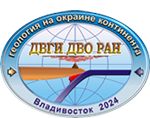Evaluating ablation and environmental impact of giant anthropogenic snow patches (Yuzhno-Sakhalinsk, Russia) Популярные
Число скачиваний: 3179
lobkina2015.pdf
Evgeny A. Podolskiy, Valentina A. Lobkina, Yuri V. Gensiorovsky, Emmanuel Thibert
Systematic snow disposal from street cleaning operations may create large anthropogenic snow/ice bodies. Such man-made cryospheric objects may be considered as complex geophysical interfaces between the atmosphere, landscape, soils and hydrosphere. Urban snow patches not only produce large amounts of meltwater (and therefore a risk of flooding), but also serve as multiphase chemical reactors due to highly polluted mixture of snow/ice with various materials and water inclusions. However, the exact roles of snow patches in the
environment and the factors driving their temporal evolution remain unclear. They are nevertheless of major importance for informed decision making and sustainable disposal operations. Here we present the results of a 4-year monitoring program concerning two artificial snow patches near the town of Yuzhno-Sakhalinsk (Russia) and the results of numerical modeling inferring the main corresponding processes, i.e. melting and water discharges. The temperature-based index method proved adequate to assess the evolution of the two
snow patches. Constant ablation factors of about 0.45-0.58 and 0.27-0.31 cm w.e. d-1 °C-1, respectively, were found to be appropriate for a first order approximation of snow patch melt dynamics. However, twice lower melt rates were found for one of the two closely located snow patches. This suggests that other factors, such as debris content, likely play a role. This difference in melting can be accounted for by modulating the ablation factor according to debris properties. In terms of peak daily water discharge, snow patch melting produces
about 5-15 cm w.e. per day, comparable to rain rates during regional typhoons. This study represents a starting point that should be followed by a more detailed monitoring program and the application of a more complex numerical model of snow disposal sites, to allow optimization of their maintenance. For example, marginal melting or the combined influence of debris and soils on surface runoff should be further investigated. Moreover, better constrained and formulated chemical processes will allow a more reliable estimate of the local environmental impact of regular snow disposal.







